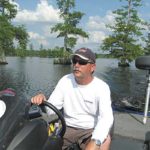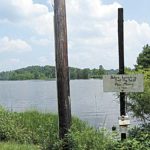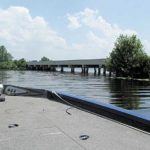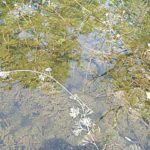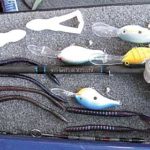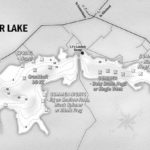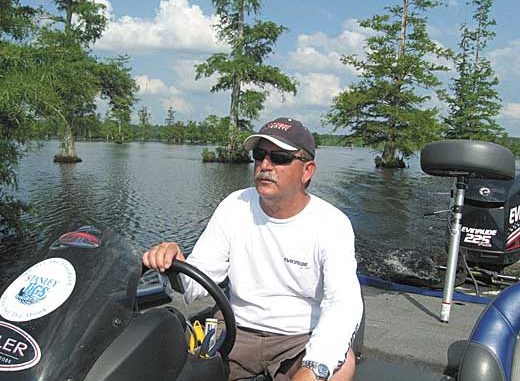
Kepler Lake is tough to find, which means anglers who fish there have the most underrated bass fishing in Louisiana all to themselves.
I have dipped a lure in the waters of virtually every lake in North Louisiana. As an outdoor writer, I feel it necessary that I familiarize myself with the waters where my readers hang out.
However, there is one lake in north Louisiana, Kepler Lake, I’d never laid eyes on until recently. There’s a good reason for that; I couldn’t have found the lake if my life depended on it.
One of my assignments in covering the outdoor scene is to compile a monthly fishing report for Louisiana Sportsman that covers prime fishing waters in the north half of the state. Simsboro fishing guide Sid Havard (318-247-6884) is my source for information for Kepler Lake.
One thing Havard mentions to me frequently is that good fishing on Kepler is a well-kept secret. I don’t wonder since you can’t fish what you can’t find.
Curiosity got the better of me, and I arranged for Havard to take me on a tour of Kepler Lake recently. I was not disappointed. This beautiful little gem in the woods of Bienville Parish has all that an angler could want. From bass to bluegills to chinquapins to huge Opelousas catfish, they’re all here on Kepler Lake.
According to the Louisiana Department of Wildlife and Fisheries, Kepler was created in 1957 when Kepler Creek was dammed. Water spread out over the lowlands surrounding the creek, resulting in a cypress-studded and stump-infested 2,000-acre lake.
Havard, 50, now lives in Simsboro with his wife and three children, but he grew up near Kepler and has fished it practically all his life. He especially remembers duck hunting on the lake with his dad in the early years.
“Dad and his buddies would shoot ducks, and I was their retriever; I’d paddle out in a little boat and bring in their birds,” Havard said. “When the lake was new, the only boat you could use was a small one because the brush was so thick. Today, I fish it in my bass boat with a 225-horse motor with no problem.”
A first-time visitor to the lake, however, would likely encounter problems in the form of submerged stumps and channels that are not well-marked.
“When they draw the lake down for aquatic vegetation control, it will scare you. You can almost walk across the lake stump to stump there are so many of them under here,” Havard cautioned.
It is these very stumps and scattered cypress trees, though, that hold the magic for Kepler bass fishermen.
“You can pitch a jig or soft-plastic lure around the bases of the cypresses or dig a crankbait next to the stumps and catch some good bass in here,” said Havard, whose largest Kepler bass weighed 8 pounds.
One of Havard’s favorite methods is to arrive at the lake around sunset during warm months and fish under the cover of darkness.
“You can head for the northern half of the lake, and throw a single-spin black spinnerbait or a black Ribbit frog, and you can be in business,” he said. “I love to fish these lures on top of the grass at night because big bass will leave the deeper channel and cruise around the grass to feed on bluegills. They’re not as cautious at night, and you can really have a ball.”
Any angler planning a night bass-fishing trip to Kepler would be advised to come early and tour the lake before dark.
“Unless you know the lake and the location of the channel, your boat will stay hung up on a stump half the night,” Havard said.
For summer bass fishing on Kepler, Havard has a plan that has worked well for him in the past.
“I’ll start early morning on the upper end of the lake with a Ribbit or Fluke, and fish these lures on top of the grass,” he said. “Between dawn and sun-up, you can get some big bites fishing the grass with these baits.
“Later in the day, I’ll use a soft-plastic worm or Baby Brush Hog, and I’ll fish it in either plum or junebug red, two great colors on this lake.
“Another area of the lake that has worked well for me is on the lower end below the bridge, and I’ll fish the channel and boat runs with a deep-diving crankbait, something like a DD22, and I’ll fish it on 10-pound-test line to get it down quickly. I want to bump the stumps with this lure. When you hit a stump, you want to stop your retrieve for a couple of seconds and start it again. A fish is likely to hit it on the start-up.”
As good as is the bass fishing, bream fishermen love this lake as well, especially during the spring spawn. Since much of the waters feeding the lake emerge from underground springs, its waters are a few degrees cooler than other lakes, which puts the spawning season a bit later.
“This lake has some really big chinquapin, along with some good crappie fishing,” Havard said. “Another species that attracts lots of attention is the flathead, or Opelousas, catfish. You can tie a stout line to a stump along the edge of the channel, put on a big hook and bait it with a live bream and have a chance to catch a big catfish that could easily weigh over 50 pounds.
“The lake has some big alligators as well; I’ve seen some over 12 feet long here, so visitors are advised against training their duck-retrieving dogs on this lake. More than a few have been known to become gator bait.”
Another site of interest, especially to bird watchers, is a rookery that Havard says has only been established on Kepler for a year. As we toured the north end of the lake, a constant loud chorus of screeches, grunts, gurgles and croaks could be heard coming from a thick growth of cypresses along a hundred-yard strip, a din that sounded for all the world like the sound track of a jungle movie.
Literally hundreds of herons, egrets and a variety of other shore birds were constructing nests in the trees, and we watched the constant flight of individual birds winging across the lake, returning minutes later with sticks and leaves in their beaks, nest-building material obviously.
Kepler Lake has a few other characteristics that set it apart from most other lakes. In addition to Kepler Creek feeding the lake, there are numerous underground springs that provide water, and as a result, the waters are unusually clear and cooler than other North Louisiana lakes.
The lake is relatively shallow, especially on the north end, with an abundance of aquatic vegetation, such as coon-tail, growing on or just beneath the surface. Periodic drawdowns are necessary to keep the vegetation in check. Lily-pad fields dot the lake on the north end, providing plenty of cover for fish.
The lake is obviously popular for yo-yo fishermen as evidenced by the hundreds of PVC pipes stuck in the lake bottom and fashioned into a “T” configuration for fastening yo-yos to each end.
“Kepler never gets muddy, no matter how much rain and run-off we have,” Havard said. “After a heavy rain, you might notice a little color to the water, but it is never muddy. As a result of such clear water, anglers need to be cautious and not spook the fish. Long casts are usually recommended fishing here.”
The lake is divided roughly into two sections, north and south, by a concrete bridge that spans it near mid-point. There is a public boat launch area on the south side of the spillway, Parker’s, a private launch area is on the north side of the spillway and J.J.’s, another launch-for-pay area on the north side of the concrete bridge at mid-lake.
Working as a safety coordinator for one of Weyerhaeuser’s plants, Havard is especially safety-conscious, not only on his job but on his weekend guiding trips.
“I can’t overemphasize the importance of fishermen wearing life jackets and becoming familiar with the waters where they launch their boats,” he said. “On lakes such as Kepler, you have to be so careful if you don’t know the lake to avoid hitting a stump or log that will tear up your motor or flip your boat.”
A Louisiana road map reveals that one way to get to the lake is to take I-20 to Gibsland, exit south on Highway 154. Kepler is hidden there somewhere just southeast of the junction of Highway 154 and Highway 507 not too far from Bienville, Castor and Jamestown.
On our return trip, we passed the marker noting Driskill Mountain, the highest point in Louisiana with elevation of a dizzying 535 feet.
Want to give this little jewel of a lake a try this year? You could be in luck with great fishing, and you’re not likely to have much company because Kepler Lake has very little fishing pressure. We were there on Memorial Day weekend, and saw two other boats.
Apparently, other anglers are like me; they can’t fish it if they can’t find it.
